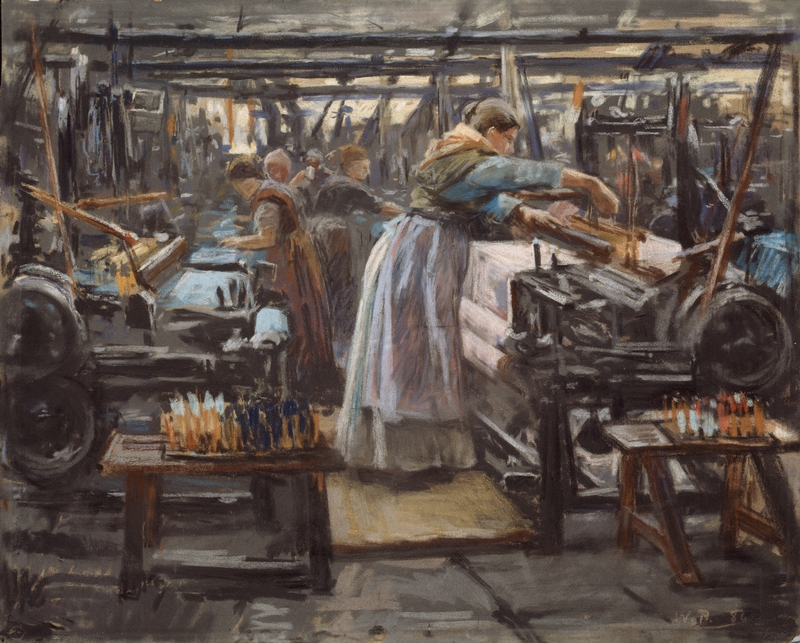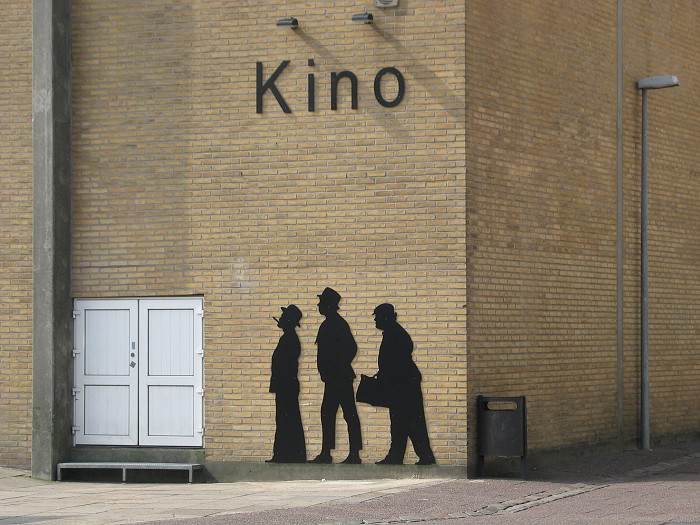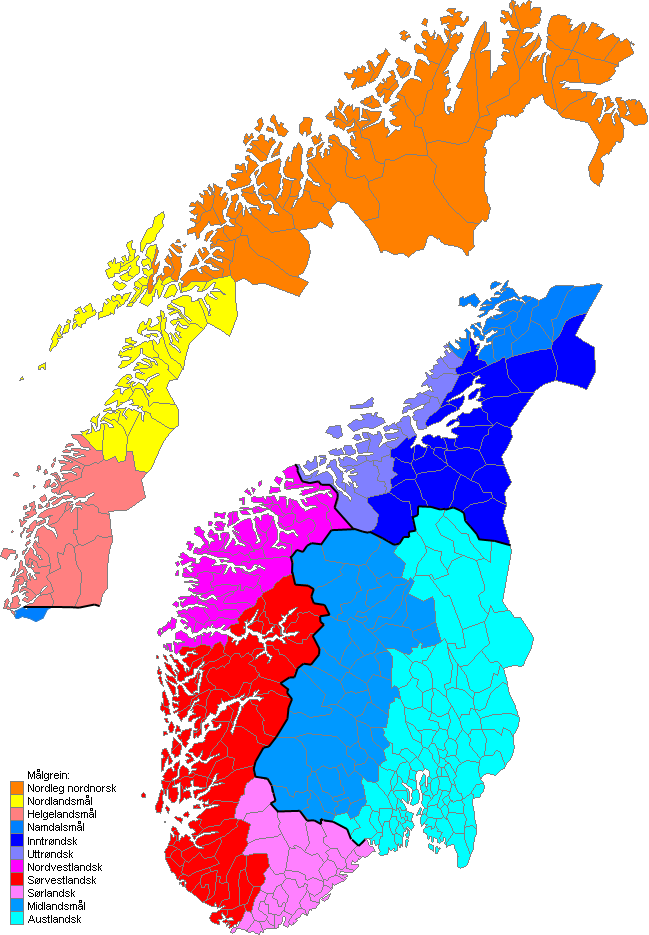|
Oslo Dialect
Oslo dialect ( no, Vikamål and ''Østkantmål'', translated Vika dialect and East End dialect) is a Norwegian dialect and the traditional dialect of Oslo, Norway. It must not be confused with the current native spoken language of Oslo, Standard East Norwegian.Arild Leitre; Einar Lundeby; Ingvald Torvik. ''Språket vårt før og nå''. Gyldendal, 1994 The Oslo dialect has been considered to be an extinct form of Norwegian, but there are surviving fragments of it, especially on the East End of Oslo.Oslofolk har tatt livet av hunkjønn , Aftenposten Originally, the Oslo dialect was the dialect of the lower social stratas, primarily the workers, farmers and peasants. The dialect is related to nearby East Norwegian dialects. After the |
Fra Hjula Veveri
A friar is a member of one of the mendicant orders founded in the twelfth or thirteenth century; the term distinguishes the mendicants' itinerant apostolic character, exercised broadly under the jurisdiction of a superior general, from the older monastic orders' allegiance to a single monastery formalized by their vow of stability. A friar may be in holy orders or a brother. The most significant orders of friars are the Dominicans, Franciscans, Augustinians, and Carmelites. Definition Friars are different from monks in that they are called to live the evangelical counsels (vows of poverty, chastity, and obedience) in service to society, rather than through cloistered asceticism and devotion. Whereas monks live in a self-sufficient community, friars work among laypeople and are supported by donations or other charitable support. Monks or nuns make their vows and commit to a particular community in a particular place. Friars commit to a community spread across a wider geograp ... [...More Info...] [...Related Items...] OR: [Wikipedia] [Google] [Baidu] |
Oslo
Oslo ( , , or ; sma, Oslove) is the capital and most populous city of Norway. It constitutes both a county and a municipality. The municipality of Oslo had a population of in 2022, while the city's greater urban area had a population of in 2019, and the metropolitan area had an estimated population of in 2021. During the Viking Age the area was part of Viken. Oslo was founded as a city at the end of the Viking Age in 1040 under the name Ánslo, and established as a ''kaupstad'' or trading place in 1048 by Harald Hardrada. The city was elevated to a bishopric in 1070 and a capital under Haakon V of Norway around 1300. Personal unions with Denmark from 1397 to 1523 and again from 1536 to 1814 reduced its influence. After being destroyed by a fire in 1624, during the reign of King Christian IV, a new city was built closer to Akershus Fortress and named Christiania in honour of the king. It became a municipality ('' formannskapsdistrikt'') on 1 January 1838. The ... [...More Info...] [...Related Items...] OR: [Wikipedia] [Google] [Baidu] |
Norway
Norway, officially the Kingdom of Norway, is a Nordic country in Northern Europe, the mainland territory of which comprises the western and northernmost portion of the Scandinavian Peninsula. The remote Arctic island of Jan Mayen and the archipelago of Svalbard also form part of Norway. Bouvet Island, located in the Subantarctic, is a dependency of Norway; it also lays claims to the Antarctic territories of Peter I Island and Queen Maud Land. The capital and largest city in Norway is Oslo. Norway has a total area of and had a population of 5,425,270 in January 2022. The country shares a long eastern border with Sweden at a length of . It is bordered by Finland and Russia to the northeast and the Skagerrak strait to the south, on the other side of which are Denmark and the United Kingdom. Norway has an extensive coastline, facing the North Atlantic Ocean and the Barents Sea. The maritime influence dominates Norway's climate, with mild lowland temperatures on the sea co ... [...More Info...] [...Related Items...] OR: [Wikipedia] [Google] [Baidu] |
Standard East Norwegian
Urban East Norwegian, also known as Standard East Norwegian ( nb, standard østnorsk, ), is a Norwegian dialect spoken in Oslo and its surrounding metropolitan area. In Eastern Norway, Urban East Norwegian is generally accepted as the ''de facto'' spoken standard of Bokmål. Urban East Norwegian is considered a dialect of Modern Norwegian with roots in Eastern Norwegian elites' pronunciation of Danish (Dano-Norwegian Dano-Norwegian ( Danish and no, dansk-norsk) was a koiné/ mixed language that evolved among the urban elite in Norwegian cities during the later years of the union between the Kingdoms of Denmark and Norway (1536/1537–1814). It is from th ...). It is markedly different from the traditional Norwegian dialects in Eastern Norway, with which it has co-existed with for centuries. The labels "Standard East Norwegian" and "Urban East Norwegian" are not in common use in Norway. History As of 2000, Urban East Norwegian was the most commonly taught variety of No ... [...More Info...] [...Related Items...] OR: [Wikipedia] [Google] [Baidu] |
East End Of Oslo
The East End and West End ( nb, østkanten og vestkanten, nn, austkanten og vestkanten) are used as names for the two parts of Oslo, Norway, formed by the economic and socially segregating separation line that has historically passed along the street Uelands gate. The Akerselva river is often seen as a boundary between west and east, but that can be misleading, as there are working-class neighbourhoods on both sides of the river. The West End was built in the 1840s, and had since the 17th century been a common land area, with the area behind the castle as an exit point. The East End grew around the new industry and along the passageways to the east. Around 1890, the division between east and west was prominent and most districts of the city were marked by class, either by working-class or bourgeois class. This division was reflected in architecture, but also in politics in that the Conservative Party and the Labour Party were, taken together, much more dominant than in other par ... [...More Info...] [...Related Items...] OR: [Wikipedia] [Google] [Baidu] |
Industrialization
Industrialisation ( alternatively spelled industrialization) is the period of social and economic change that transforms a human group from an agrarian society into an industrial society. This involves an extensive re-organisation of an economy for the purpose of manufacturing. Historically industrialization is associated with increase of polluting industries heavily dependent on fossil fuels. With the increasing focus on sustainable development and green industrial policy practices, industrialization increasingly includes technological leapfrogging, with direct investment in more advanced, cleaner technologies. The reorganization of the economy has many unintended consequences both economically and socially. As industrial workers' incomes rise, markets for consumer goods and services of all kinds tend to expand and provide a further stimulus to industrial investment and economic growth. Moreover, family structures tend to shift as extended families tend to no longer liv ... [...More Info...] [...Related Items...] OR: [Wikipedia] [Google] [Baidu] |
Dano-Norwegian
Dano-Norwegian ( Danish and no, dansk-norsk) was a koiné/mixed language that evolved among the urban elite in Norwegian cities during the later years of the union between the Kingdoms of Denmark and Norway (1536/1537–1814). It is from this koiné that the unoffical written standard Riksmål and the official written standard Bokmål developed. Bokmål is now the most widely used written standard of contemporary Norwegian. History As a spoken language During the period when Norway was in a union with Denmark, Norwegian writing died out and Danish became the language of the literate class in Norway. At first, Danish was used primarily in writing; later it came to be spoken on formal or official occasions; and by the time Norway's ties with Denmark were severed in 1814, a Dano-Norwegian vernacular often called the "cultivated everyday speech" had become the mother tongue of parts of the urban elite. This new Dano-Norwegian koiné could be described as Danish with Norwegian pr ... [...More Info...] [...Related Items...] OR: [Wikipedia] [Google] [Baidu] |
Olsen Gang
The ''Olsen Gang'' ( da, Olsen-banden, no, Olsenbanden, german: Die Olsenbande) is a Danish comedy film series created by Danish director Erik Balling and special effects expert Henning Bahs about the eponymous fictional criminal gang. The gang's leader is the criminal genius and habitual offender Egon Olsen and his accomplices are Benny and Kjeld (Kjell in Norwegian). The gang members are harmless, extremely rarely target ordinary citizens, and never deliberately use violence. The first film came in 1968; during the next thirty years a total of fourteen films were made. A Norwegian version of the film series was also made (a total of 14 films from 1969 to 1999), in most cases based directly on the scripts for the Danish films. Later, starting in 1981, Sweden also produced their own version: ''Jönssonligan''. Plot Most of the films start with Egon coming out of jail and being enthusiastically welcomed by Benny and Kjeld. The three men will then have a beer together in the li ... [...More Info...] [...Related Items...] OR: [Wikipedia] [Google] [Baidu] |
Oslolosen
Kjell Aronsen, known as "''Oslolosen''", is a fictional character on the Norwegian sketch comedy television show '' Uti vår hage 2'', a show that ran on the Norwegian Broadcasting Corporation (NRK) in the spring of 2008. The character, portrayed by Harald Eia, premiered in episode two of the show, and has also appeared in several shorter segments released directly onto the NRK website and on YouTube. As of 1 September 2011, some of the YouTube episodes have received as many as 800,000 views. Character biography The character is a certified guide for the city of Oslo, though his title – "''oslolosen''" – uses a Norwegian word corresponding to the English "maritime pilot". The meaning of this becomes clear from his first appearance, where his job is to lead a group of men from Northern Norway – who have managed to get stuck in a roundabout – onto the right exit. He is consequently obliged by law to give the three men a guided tour of the capital. It later b ... [...More Info...] [...Related Items...] OR: [Wikipedia] [Google] [Baidu] |
East End And West End Of Oslo
The East End and West End ( nb, østkanten og vestkanten, nn, austkanten og vestkanten) are used as names for the two parts of Oslo, Norway, formed by the economic and socially segregating separation line that has historically passed along the street Uelands gate. The Akerselva river is often seen as a boundary between west and east, but that can be misleading, as there are working-class neighbourhoods on both sides of the river. The West End was built in the 1840s, and had since the 17th century been a common land area, with the area behind the castle as an exit point. The East End grew around the new industry and along the passageways to the east. Around 1890, the division between east and west was prominent and most districts of the city were marked by class, either by working-class or bourgeois class. This division was reflected in architecture, but also in politics in that the Conservative Party and the Labour Party were, taken together, much more dominant than in other par ... [...More Info...] [...Related Items...] OR: [Wikipedia] [Google] [Baidu] |
Urban East Norwegian
Urban East Norwegian, also known as Standard East Norwegian ( nb, standard østnorsk, ), is a Norwegian dialect spoken in Oslo and its surrounding metropolitan area. In Eastern Norway, Urban East Norwegian is generally accepted as the ''de facto'' spoken standard of Bokmål. Urban East Norwegian is considered a dialect of Modern Norwegian with roots in Eastern Norwegian elites' pronunciation of Danish (Dano-Norwegian Dano-Norwegian ( Danish and no, dansk-norsk) was a koiné/ mixed language that evolved among the urban elite in Norwegian cities during the later years of the union between the Kingdoms of Denmark and Norway (1536/1537–1814). It is from th ...). It is markedly different from the traditional Norwegian dialects in Eastern Norway, with which it has co-existed with for centuries. The labels "Standard East Norwegian" and "Urban East Norwegian" are not in common use in Norway. History As of 2000, Urban East Norwegian was the most commonly taught variety of No ... [...More Info...] [...Related Items...] OR: [Wikipedia] [Google] [Baidu] |
Norwegian Dialects
Norwegian dialects (''dialekter'') are commonly divided into four main groups, 'Northern Norwegian' (), 'Central Norwegian' ('' trøndersk''), 'Western Norwegian' (''vestlandsk''), and 'Eastern Norwegian' (). Sometimes 'Midland Norwegian' () and/or 'South Norwegian' () are considered fifth or sixth groups. The dialects are generally mutually intelligible, but differ significantly with regard to accent, grammar, syntax, and vocabulary. If not accustomed to a particular dialect, even a native Norwegian speaker may have difficulty understanding it. Dialects can be as local as farm clusters, but many linguists note an ongoing regionalization, diminishing or even elimination of local variations. Normalized speech, following the written languages ''Bokmål'' and ''Nynorsk'' or the more conservative '' Riksmål'' and '' Høgnorsk'', is not in common use, except in parts of Finnmark (where the original Sami population learned Norwegian as a second language), in much of , certain socia ... [...More Info...] [...Related Items...] OR: [Wikipedia] [Google] [Baidu] |





